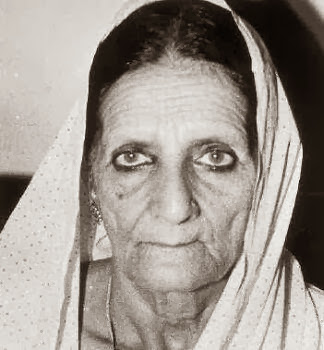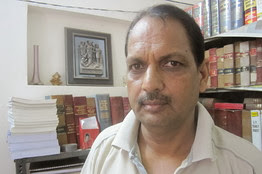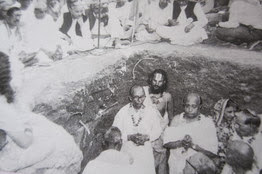Rise and fall of Rajiv Gandhi - General Elections 1984 - Emergence of communal politics in large scale
In our earlier posting, we wrote about the rise and assassination of Indira Gandhi. After Indira...

In our earlier posting, we wrote about the rise and assassination of Indira Gandhi. After Indira Gandhi's assassination, Rajiv Gandhi, her eldest son was sworn in as Prime Minister by the President of India. In the anti sikh riots, thousands of people were killed. As per the advise of new Prime Minister Raji Gandhi, President of India dissolved the 7th Lok Sabha and ordered General Elections.
8th General Elections 1984
8th General Elections were held for 515 constituencies only. The elections for Punjab and Assam were held later due to law and order problem Voter turnout was 63.4%. The elections were held on 24, 27 and 28th December 1984.
Due to sympathy over the assassination of Indira Gandhi, Congress alliance (Congress and AIADMK) secured 416 seats (50.7% vote share). Congress alone got 404 seats with 49.01% vote share.
The second largest party was Telugu Desam Party (TDP) led by N T Ramarao with 30 seats (4.3% vote share). Janata Party could secure 10 seats with 6.9% vote share.
Rajiv Gandhi sworn in as PM
Rajiv Gandhi was sworn in as the Prime Minister of India. Rajiv Gandhi remains as the youngest PM in the history of Independent India.
As the young Prime Minister, he took lot of initiatives to modernise and improve the telecom sector, education sector, technology sector. He improved the relationship with US. He also wanted to improve the relationship with neighbouring countries and to reduce the tension. He wanted to reduce the License Raj regime. He was trying to get Mr Clean image in the governance. When he started his job as PM, he brought lot of hopes to the Indians.
Some of the major challenges and controversies
As the young PM, he had to face major challenges like Bhopal Gas tragedy, Coup in Maldives, anti sikh riots, Srilankan Tamil issue, etc.
He was accused of allowing Warren Anderson, to leave the country after the Bhopal Gas tragedy (Dec 1984).
He sincerely attempted to resolve Srilankan Tamil probems through Rajiv Gandhi - Jayawardane accord and by despatching Indian Peace Keeping Force (IPKF) to Sri Lanka to maintain peace. Later he landed in a controversy and became victim. He was assassinated in 1991 by Liberation Tigers of Tamil Eelam (LTTE).
V P Singh, then Finance Minister in his cabinet accused Rajiv Gandhi with Bofors scandal, involving around Rs.60 crores of rupees. He was accused of favouring Ottavio Quattrocchi, an Italian business man close to the family of his wife Sonia Gandhi (an Italian by birth). Bofors scandal brought down his Mr Clean image drastically. V P Singh was dismissed from the cabinet in 1988. VP Singh resigned from Congress and started the Janata Dal party.
Beginning of major communal politics - reversing the Supreme Court judgement in Shah Banu case
Shah Banu Photo courtesy: The Hindu |
In the case Mohammad Ahmed Khan vs Shah Banu, the 5 Judges full bench of Supreme Court ruled in 1985 that Shah Banu (60), the divorcee was entitled for the compensation from her erstwhile husband under Sec 125 of Cr PC. Though, originally Rajiv Gandhi supported this judgement in the Parliament, later at the pressure of Islamic leaders, he agreed to pass an Act to nullify the Supreme Court Judgement and to enforce Shariat Law for Muslim women even under Criminal Penal Code.
His approach was criticised by the Hindu leaders as an 'appeasement of Muslim community'. They objected to any modification of SC ruling on the basis of religion. They argued when the Indian Constitution envisaged 'uniform civil code' for Indian citizens, the approach of Rajiv Gandhi to amend the criminal law was a communal politics amounted to an appeasement. They further argued that there cannot be different criminal law for different religions. However, Rajiv Gandhi wanted to introduce a new Act to nullify the SC ruling.
Ayodhya issue
Though Rajiv Gandhi started his term of office as PM with a great hope, he caught himself in the communal politics. To avoid displeasure with Hindus, due to his efforts to please the Muslim community, he found an answer in one of the civil cases in the Faizabad Court, a town close to Ayodhya, the temple town.
Ayodhya is considered as the birth place of Lord Ram. There was a dispute in one of the sites popularly known as 'Ram Janma Bhoomi- Babri Masjid'. Hindus believed that this was the birth place of Lord Ram and Babar one of the Moghul Kings destroyed the original temple and constructed the Babri Masjid. The dispute was in existence for several years. Till 1949, the place was not used for worship either by Hindus or by Muslims. A case was filed in 1949 in Allahabad High Court by some Hindus to declare the structure as Ram Janma Bhoomi.
Meanwhile, way back in 1950, a Ram Lala (Ram deity) was placed in the mid night by some persons. When it was objected by the Muslim community then PM, Pandit Jawaharlal Nehru wanted to remove the Ram idol from the place. Since it was an highly sensitive issue, the Congress Government in UP at that time did not oblige Nehru and did not remove the Ram idol. To avoid law and order problem and worship by public, without any official orders, the building was closed with a lock. Public were not allowed to worship, but priests used to go inside and conduct poojas. That was the position till 1985.
Umesh Chandra Pandey - Photo courtesy: Wall Street Journal |
One Umesh Chandra Pandey filed a case during Jan 1986 in Faizabad Court to unlock the Ram janma Bhoomi and to allow the devotees to worship Lord Ram. This case came up on 1st Feb 1986 for hearing. Since there was no order for locking the Ram janma Bhoomi years back, the judge ordered the lock to be removed. Ram janma Bhoomi was opened for worship of Lord Ram. This was widely publicised through All India Radio and Doordarshan. The unlocking was done with the consent of Rajiv Gandhi to please Hindus.
According to Mani Shankar Iyer (now a senior Congress leader and Rajiv's close friend), Rajiv Gandhi received this information when he was at Maldives. (see Wall Street Journal article).
Now back to Muslims
Having pleased Hindus with the unlocking of Ram Janma Bhoomi, Rajiv Gandhi passed an Act known as 'THE MUSLIM WOMEN (PROTECTION OF RIGHTS ON DIVORCE) ACT, 1986 - ACT NO. 25 OF 1986 on 19th May 1986. This act nullified the SC ruling given in Shah Banu case. According to this Act, the divorcee woman is entitled for maintenance from her husband only during Iddat Period (maximum 3 months).
Now back to Hindus
Hindu organisations like Viswa Hindu Parishad (VHP) were campaigning for building a Ram temple at Ayodhya. They had covered 2.75 villages and 60 lakh people.
In June 1989, BJP in their National Executive Meeting endorsed the views of Viswa Hindu Parishad (VHP) to build a Ram temple at Ram Janma Bhoomi. The resolution highlighted the callous unconcern of Rajiv Gandhi on resolving the dispute of Ram Janma Bhoomi. BJP was not a main opposition party at that time (2 MPs) and VP Singh was the main threat to Rajiv Gandhi. Since the elections were to be held soon, his advisors encouraged him to co-opt the same issue to get re-elected. In view of this, he even started his 1989 Election Campaign later from Ayodhya promising 'Ram Rajya'. (See Wall Street Journal article).
Shilanya November 1989 - Photo courtesy Wall Street Jounral |
VHP wanted to perform Shilanya (Kar Seva) with the bricks collected from the devotees. Rajiv Gandhi allowed Hindus to perform Kar Seva in November 1989 in the adjoining site of Ramjanma Bhoomi. He even deputed Buta Singh, then Home Minister to participate in the Kar Seva.
Playing with Hindu and Muslim sentiments
Even in the earlier regimes, Jawaharlal Nehru and Indira Gandhi, played communal politics to woo voters in the name of 'secularism'. But during Rajiv Gandhi's time, communal politics was played openly to woo the Hindu and Muslim voters simultaneously.
Because of the frequent changes in the appeasement, both Hindu and Muslim voters did not trust Rajiv Gandhi. Probably because of his young age, he was misguided by his coteries.
In the process, he lost heavily the 1989 elections and could not form the Government. He became the opposition leader. BJP which had only 2 seats in 1984, gained 85 seats in 1989. V P Singh with the support of Left parties and BJP formed the Government.
In the next article, we will see the rise and fall of V P Singh and the beginning of caste politics in India.







